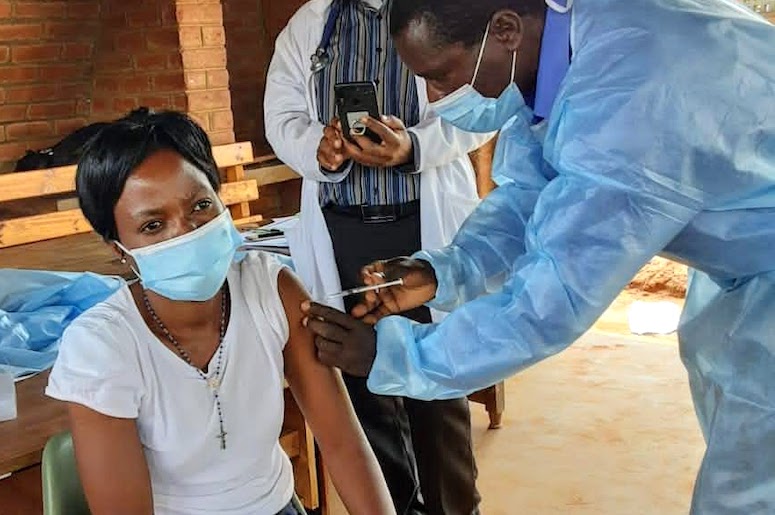A new UN report calls for an ‘SDG push’ to compensate for lost progress during the pandemic.
It has been nearly a year and a half since the CDC declared COVID-19 an official pandemic and the world continues to experience this global trauma. It may be decades before we understand the full impact of the pandemic, but the United Nations Development Programme’s latest report attempts to detail the effects COVID-19 has specifically had on reaching the Sustainable Development Goals (SDGs). Read the report Leaving No One Behind: Impact of COVID-19 on the SDGs.
Many of us have come to terms with a world of remote learning and working and many more of us are returning to a daily life that looks very much like it did before the pandemic. But this is not the case everywhere, or even most places. For much of the world, COVID-19 has changed much more than how we learn or where we work. Millions of children have no access to remote learning and billions of people have lost significant income that puts food on the table. The ‘new normal’ has resulted in an upheaval of the global progress made on the SDGsPoverty could increase up to 753 million people in low and medium human development countries (low and medium income countries) as opposed to the 100 million goal pre-pandemic.
Our COVID response.
Across Africa, South Asia and Latin America, we’ve connected our partners with critical resources such as masks, soap, hand sanitizers and food rations, in addition to live-saving medical information. These include public health awareness campaigns and partnering with organizations and local governments to address the growing COVID-19 crisis through sustainable change. Women leaders who have worked with us previously act as vectors in our own ‘push’ model to create sustainable solutions in community-led pandemic relief approaches. Read more about our COVID response.
Low and middle income countries have been disproportionately affected by the coronavirus pandemic but the UN suggests that this ‘push’ will alleviate some of that trauma and get back on track to the 2030 goals.
3 Facts about World Poverty
- 736 million people, almost 1 in 10 people in the world, live under $1.90 a day, and over half of the extreme poor (413 million) live in Sub-Saharan Africa.
- Nearly 328 million children are living in extreme poverty.
- In some countries, people in the lowest income group spend 75% or more of their incomes on food.
The pandemic will be directly responsible for potentially placing up to 169 million more people in extreme poverty by 2030 in low and middle income countries — the regions where we work. This would bring the total number of people in those regions living in extreme poverty up to 753 million — 83 million of whom are women and girls.
This is why the UN explains the need to initiate a ‘SDG Push’ to compensate for the 2030 Agenda disruption. The push aims to intervene in choices for “governance, social protection, green economy and digitalization” to provide the protection and policy practices high human development countries experience as the ‘new norm’ everyday. Some of these investments include, “reduce government corruption by 30 percent over 15 year period” for governance, “double allocation of the budget to education” for digitalization, double the population with access to improved sanitation, for social protection, and “triple the percent of population with access to electricity over 12 year period for green economy.” These initiatives are just a few of the 48 policies that will accelerate low to medium development countries to reach their 2030 SDG goal.
By initiating the ‘SDG Push’ we would see effects across five SDG targets including; eradicating extreme poverty, ending hunger, reducing maternal mortality, ensuring equitable education for girls and boys and safe and affordable drinking water. This push will not only reduce the setbacks seen in SDGs but ignite additional progress that might have not been achieved pre-pandemic.
With the proposed SDG push, it’s estimated that:
- 100 million people will move out of extreme poverty by 2030
- Malnourished people reduced by 70 million by 2030
- Access to improved water sources will be increased to 93% from 90%
- Access to improved sanitation will increase to 84% from 79%
- Countries (Madagascar and Kenya) could reach key goals prior to 2030
Without intervention, the number of children experiencing malnourishment is expected to increase by an additional 12.8 million by 2030 due to the lasting impacts of COVID-19. The ‘SDG push’ will accelerate investments and interventions to mitigate the effects of hunger COVID-19 has on low to medium income countries. This push could result in five more countries eliminating extreme hunger in 2030 and an additional 20 by 2050.
As vaccines become more available and mask mandates are lifted in higher income areas, it can seem as though COVID-19 is behind us—but that is not the case. The economic effects are dangerous and action is required by both the UN and community-driven organizations such as The Hunger Project to make sure the loss of progress is not permanent.
Pictured: Vaccination Program at Wakiso Epicenter, Uganda © The Hunger Project, 2021

